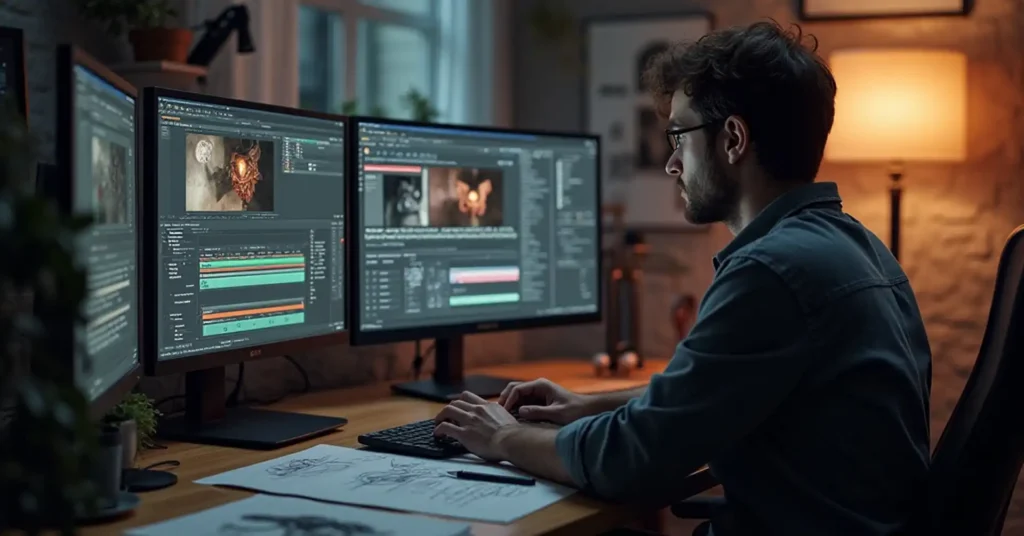When it comes to creating high-quality animations, mods, or cinematic scenes, sfm-compile is a term that often surfaces. For many creators, especially those working with Source Filmmaker (SFM) or other Source engine tools, understanding how to use sfm-compile effectively can make the difference between a smooth workflow and endless frustration. This article will provide a deep dive into what sfm-compile is, why it matters, and how you can master it to produce outstanding results.
What is SFM-Compile?
At its core, sfm-compile refers to the process of taking raw assets—such as models, textures, and animations—and compiling them into a usable format within the Source Filmmaker or Source engine environment. Compiling is necessary because the engine requires specific file formats and structures that raw or editable assets do not provide.

Without sfm-compile, your models or animations would remain incomplete, unoptimized, or simply unusable in SFM projects. In short, sfm-compile transforms your creative ideas into functional assets ready for production.
Why SFM-Compile is Important
- Optimization: Compiled assets run more smoothly, improving performance.
- Compatibility: The Source engine can only interpret specific compiled formats.
- Workflow Efficiency: Once you understand the sfm-compile process, you’ll save time and avoid common errors.
- Quality Control: Compiling allows you to adjust how textures, bones, and physics interact within the engine.
By learning sfm-compile, creators gain more control over the look and feel of their projects, ensuring professional-quality outputs.
Steps Involved in SFM-Compile
The sfm-compile process might seem intimidating, but breaking it down into smaller steps helps:
1. Preparing the Model or Asset
Before starting sfm-compile, ensure that your model or animation is clean. Remove unused materials, align bones properly, and verify texture paths.
2. Setting Up QC Files
QC (or “Quality Control”) files are essential scripts that tell the compiler how to treat your assets. During sfm-compile, the QC file defines model scaling, hitboxes, physics, and even animation sequences.
3. Using the Compiler Tool
You’ll need a compiler tool—often Crowbar or other Source SDK utilities—to execute the sfm-compile process. These tools convert your raw files into formats like MDL (for models) or VTF (for textures).
4. Testing in SFM
After compiling, always test your assets within Source Filmmaker. The sfm-compile process may reveal errors such as missing textures or misaligned bones, which can be fixed and recompiled.
Common Issues in SFM-Compile
While working with sfm-compile, creators often face challenges:
- Texture Errors: Sometimes textures don’t display correctly because paths aren’t defined in the QC file.
- Bone Rigging Problems: Improperly rigged models can break animations after sfm-compile.
- Physics Issues: Ragdoll or collision problems may occur if physics aren’t set correctly.
- Compiler Crashes: Tools like Crowbar can crash if files are too large or improperly formatted.
The solution usually involves revisiting your QC script or rechecking file structures before repeating the sfm-compile process.
Tips to Master SFM-Compile
- Start Simple: Don’t attempt to compile overly complex models at first. Practice with smaller projects.
- Keep Organized Folders: During sfm-compile, messy directories can lead to missing file errors.
- Use Community Guides: Many tutorials exist online, and communities provide QC templates and advice.
- Iterate Frequently: Compile often during your workflow instead of waiting until the end.
- Learn from Errors: Every sfm-compile failure teaches you something about asset preparation.
The Role of SFM-Compile in the Creative Industry
Many professional animators, modders, and indie developers rely on sfm-compile to bring their projects to life. From fan-made machinima videos to custom mods for games like Half-Life or Team Fortress 2, sfm-compile enables creators to push boundaries. Even in professional environments, where polished animations are required, this process remains critical for asset delivery.
Future of SFM-Compile
As the Source engine evolves and tools become more user-friendly, sfm-compile is expected to improve in terms of speed and accessibility. Developers are creating more intuitive compilers with graphical interfaces, reducing the need for heavy scripting knowledge. However, the fundamentals of sfm-compile—optimization, compatibility, and creativity—will remain essential skills for any serious creator.
Final Thoughts
Mastering sfm-compile is not just about learning a technical process—it’s about unlocking your creative potential. Once you understand how compiling works, you’ll be free to focus more on storytelling, animation, and design, knowing your assets will work seamlessly in Source Filmmaker.
Whether you’re a beginner experimenting with your first models or a seasoned animator aiming for professional results, sfm-compile is the bridge between raw creativity and finished art. By practicing regularly and learning from community resources, anyone can become proficient at this process.
In the end, sfm-compile is more than just a technical step—it’s the foundation of building immersive and visually stunning projects within the Source engine world.

Leave a Reply